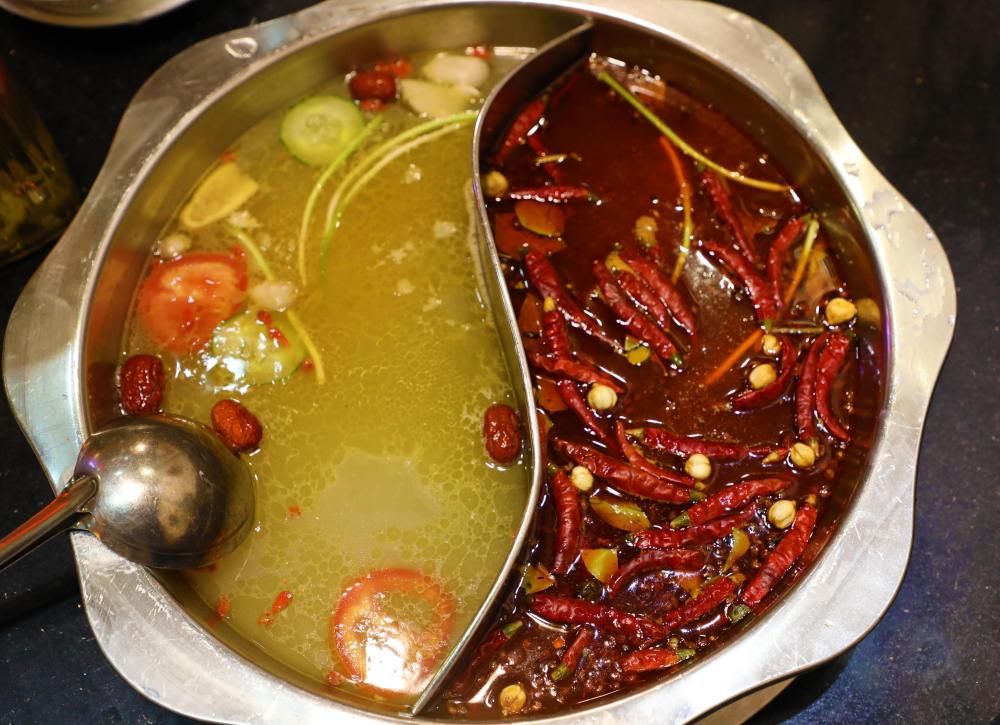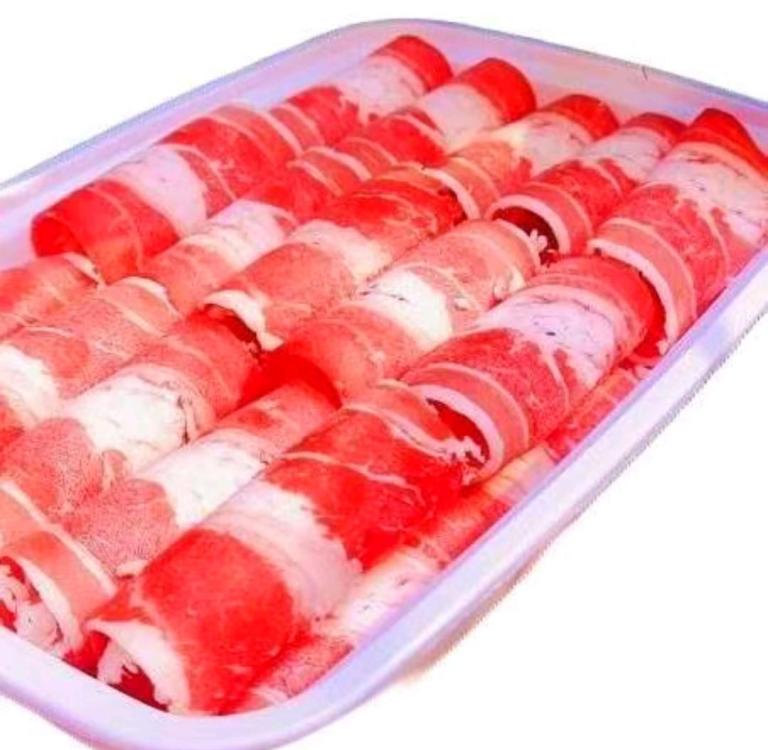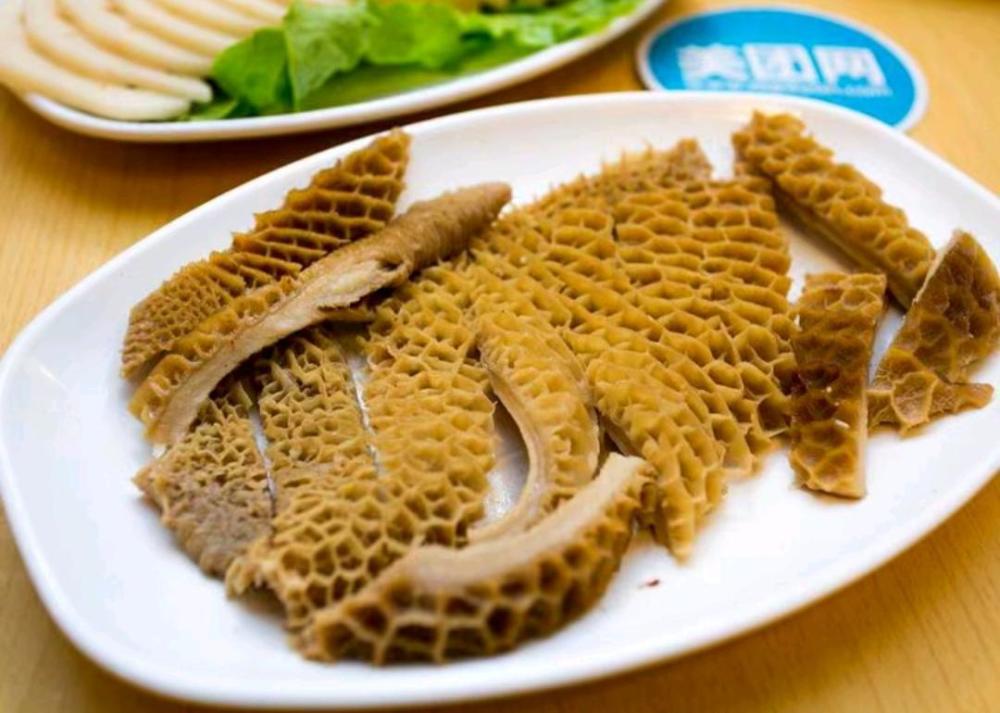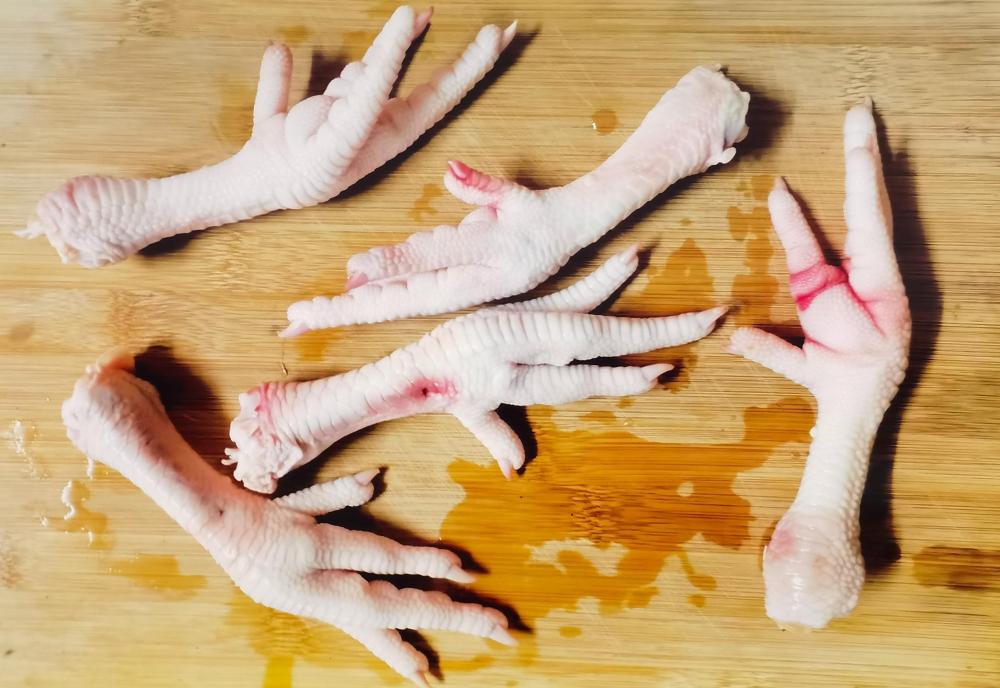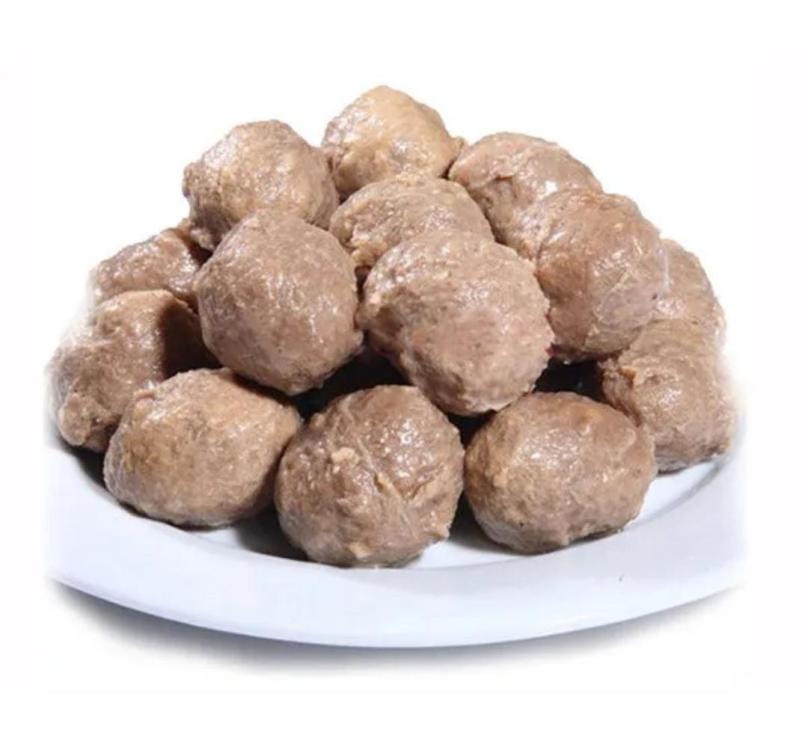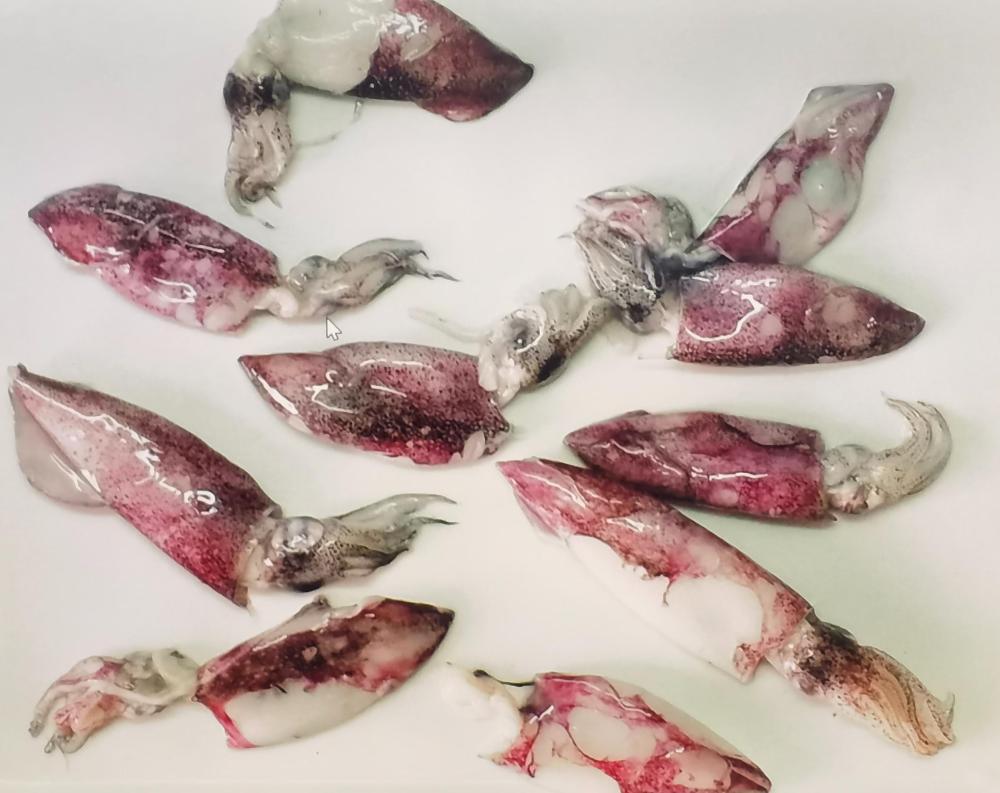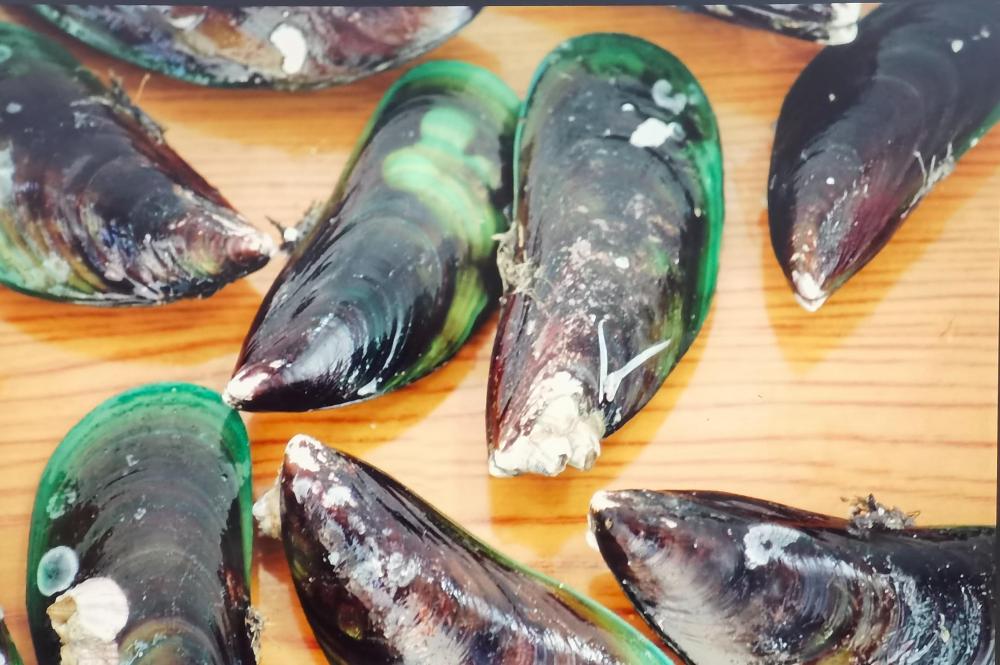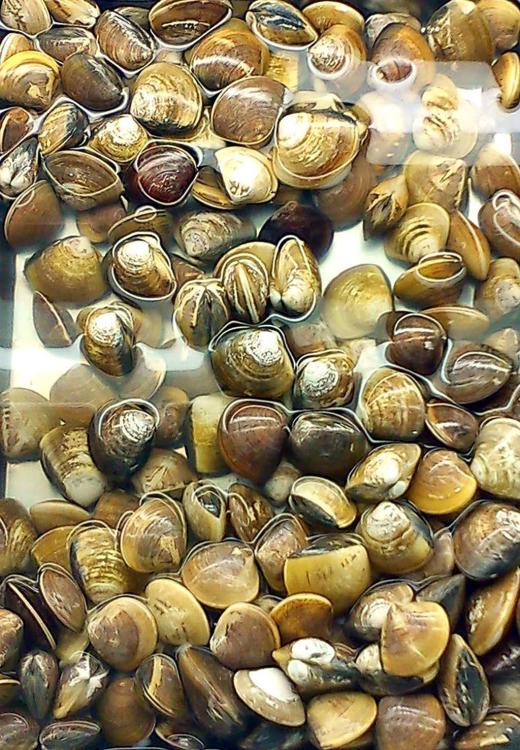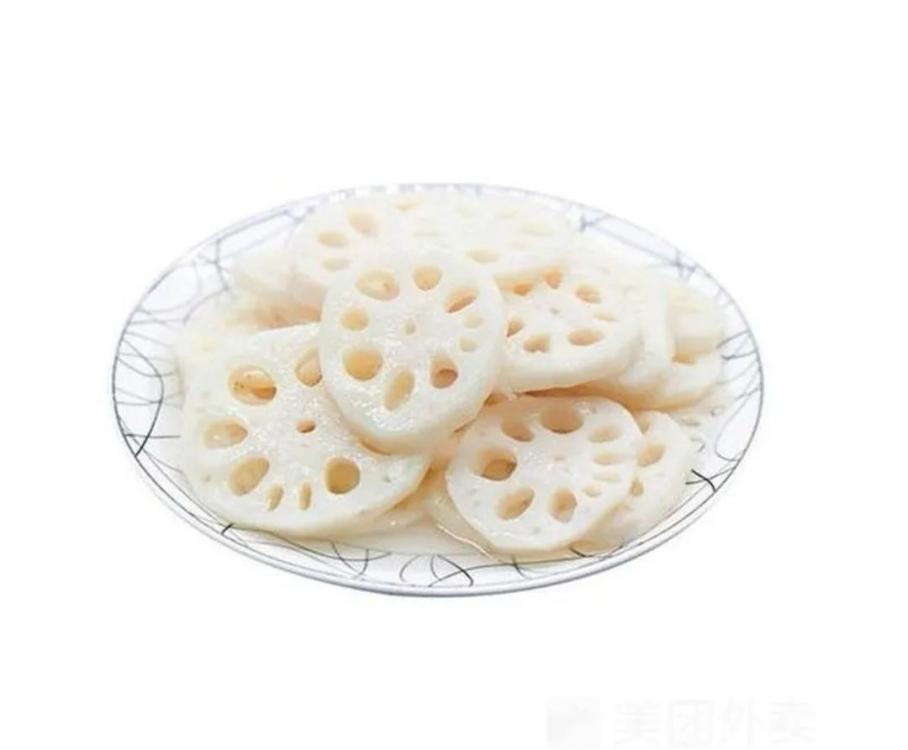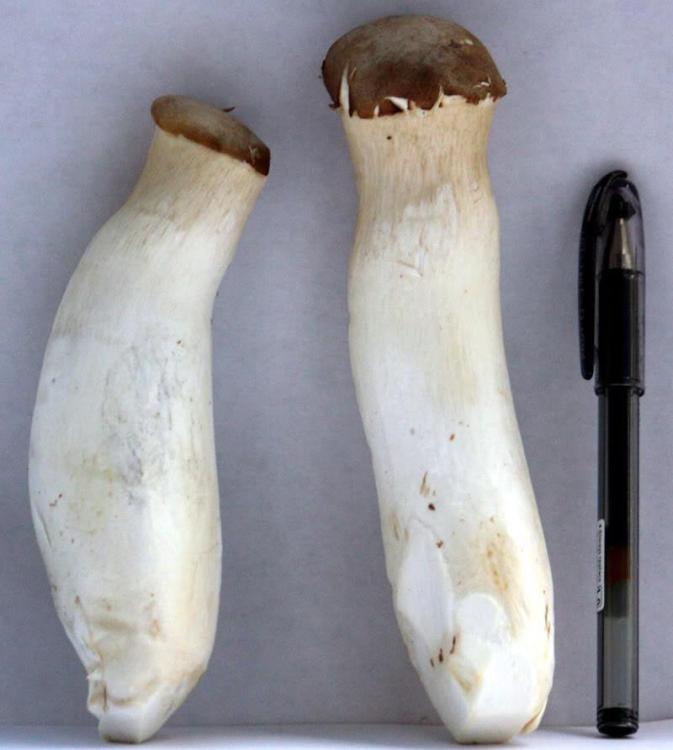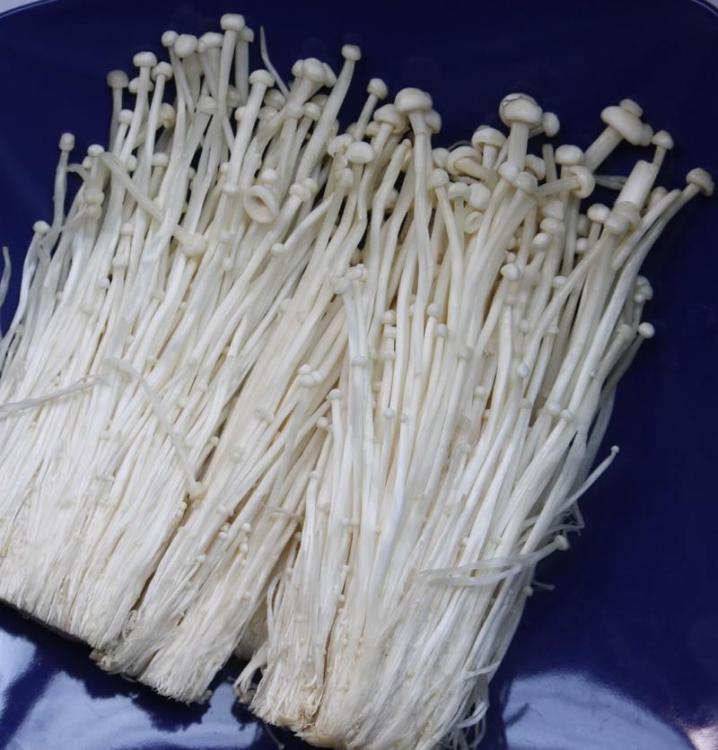The weather has turned cold in southern China with temperatures running between lows of 2C and highs of 6C. In the north, that's normal but not here. So, everyone in China is donning their winter garb in multiple layers and breaking out multiple ingredients for dinner.
It is hotpot time. I mentioned before S: 火锅底; T: 火鍋底 (huǒ guō dǐ), hotpot bases, but now that we've got our pots bubbling away, what are we going to cook in them?
The answer is "pretty much anything I want". There are no rules; but some precautions.
First we want ingredients that cook quickly. This involves not only making sensible choices but an element of preparation, mainly cutting.
The table is set with your burner and pot and surrounded by plates of ready to cook ingredients.
Meats: beef, lamb or pork, are sliced paper thin and often presented in rolls, ready to drop into the broth a few at a time.
Offal is cleaned, sliced and arranged on a plate. Beef tripe (牛肚 - niú dǔ) is particularly popular and duck's intestines (鸭肠 - yā cháng) never go amiss.
Beef tripe
Duck's Intestines
Brains (S: 脑子; T: 腦子 - nǎo zi) are a nice addition, usually porcine.
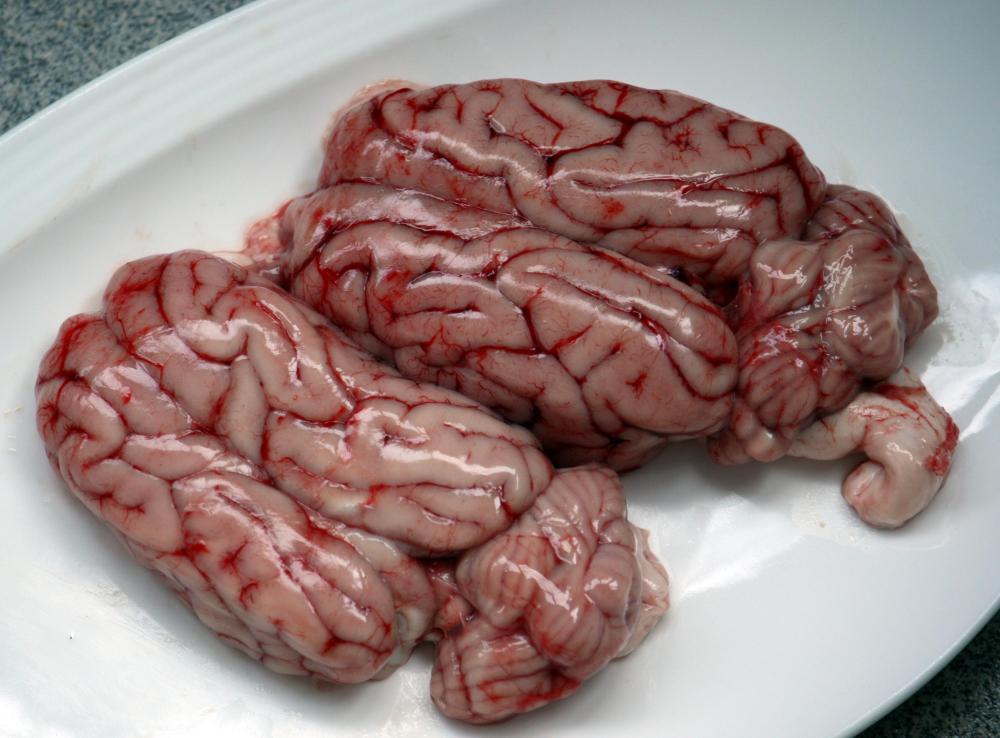
Chicken or duck feet are not to be forgotten.
Beef meatballs 牛肉丸 (niú ròu wán) are bought or prepared in advance as are fish and shrimp balls.
Seafood is prepared by slicing fish off the bones, cleaning squid or baby cuttlefish, scrubbing clams, debearding mussels etc.
Baby squid
Green Lipped Mussels
Clams
Shrimp are deveined and, perhaps, peeled; shell and head on is usually prefered.
Root vegetables: potato, sweet potato, daikon radish (S: 白萝卜; T: 白蘿蔔 - bái luó bo) and lotus root (S: 莲藕; T: 蓮藕 - lián ǒu) are peeled and sliced.
Daikon Radish
Lotus Root
Mushrooms and fungi cleaned. Oyster mushrooms (平菇 - píng gū),
king oysters (eryngii) (S: 杏鲍菇; T: 杏鮑菇 - xìng bào gū),
enoki (S: 金针菇; T: 金針菇 - jīn zhēn gū),
shiitake (香菇 - xiāng gū),
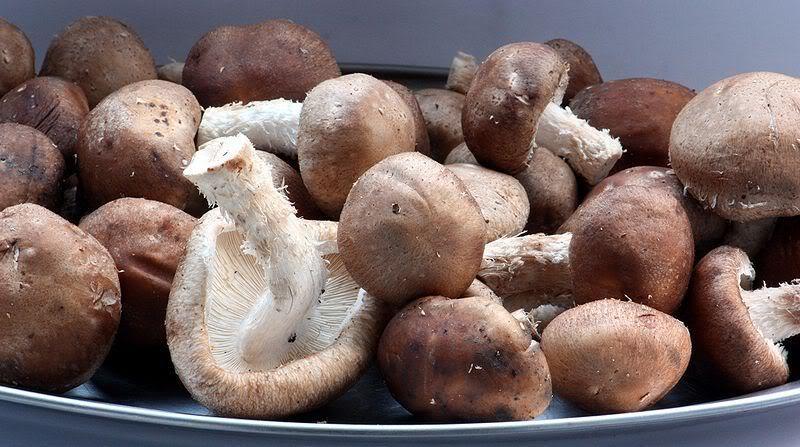
shimeji (真姬菇 zhēn jī gū or 玉皇菇 yù huáng gū),
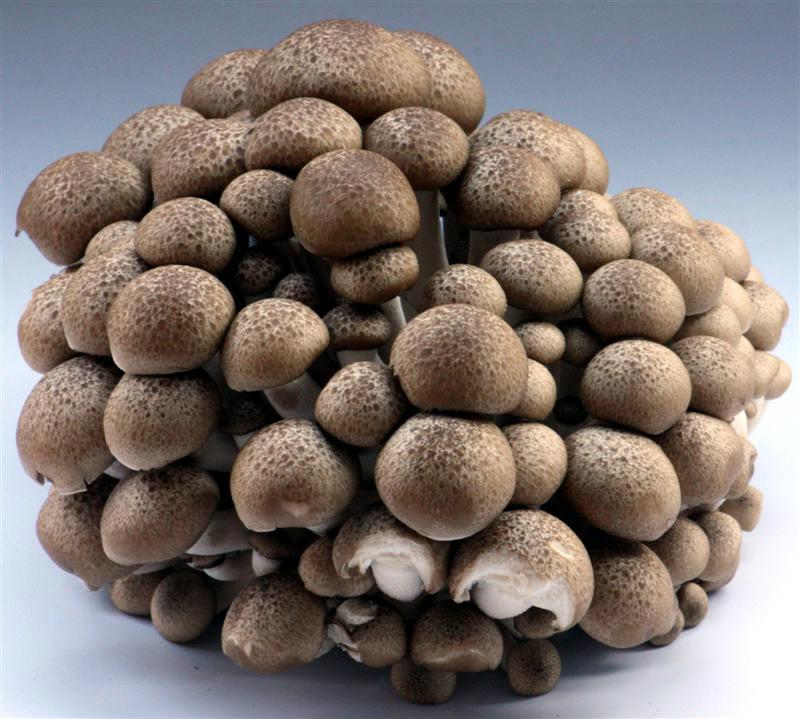
wood ear (木耳 - mù ěr) are carefully washed and where necessary sliced or halved.
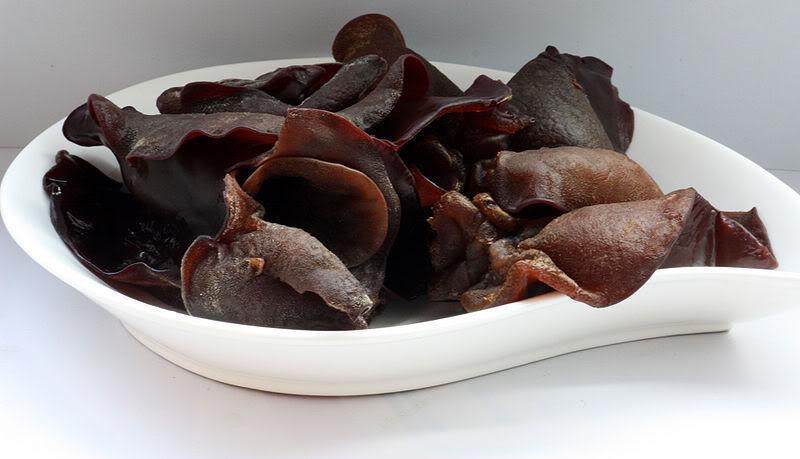
Tofu is drained and cubed or sliced.
Green vegetables of choice are washed and leaves separated as appropriate.
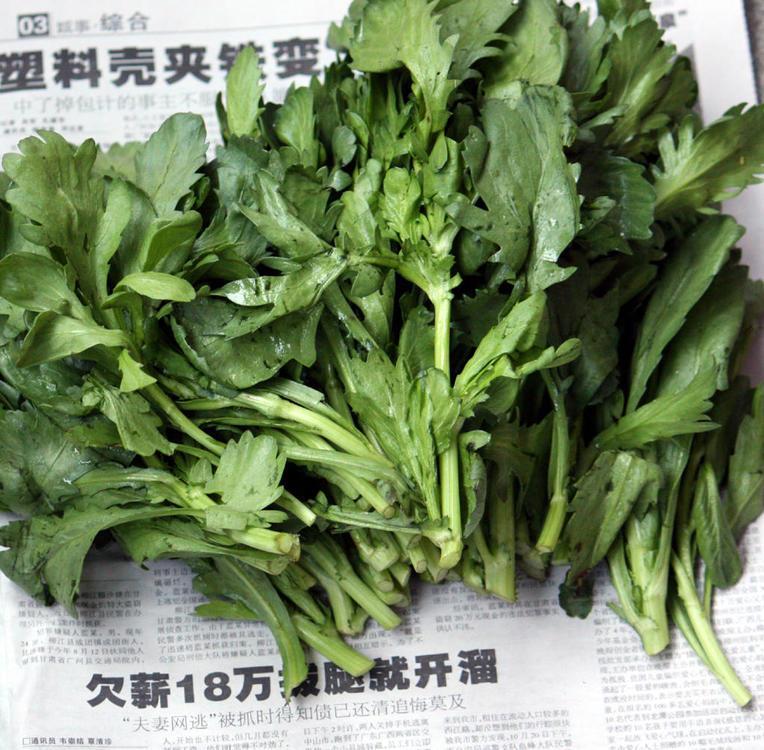
Garland Chrysanthemum
Noodles are ready.
The ingredients are then cooked one by one in small amounts - never overcrowding the base stocks. It is normal to eat the ingredients roughly in the order listed above.
The meats and seafood enriches the stock then the mushrooms add umami. Then we finish off with the vegetables and noodles.
Throughout this meal, and it can last a long time, the broth has been evaporating. A kettle or pan of hot water is kept to hand for topping it up.
These ingredients are used in all the many varieties of hotpot from Mongolian to Cantonese via Sichuan. What really separates them are the bases.
Whether eaten at home or in one of the many hotpot restaurants, eating this way is always fun.


